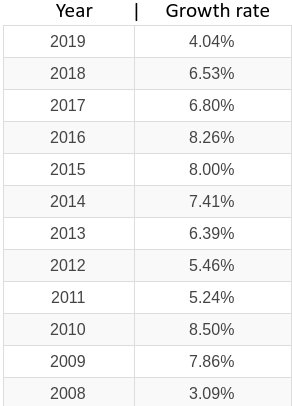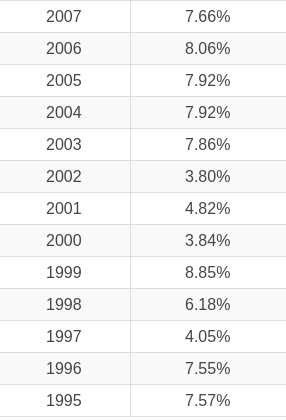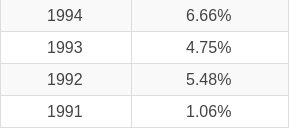Climate Change, Economic Growth and a Unique path for India: An Outsider’s View
Total Views |
-Kunal Ghosh
I do not belong to the Economics profession, nor am I a climate change expert. I sympathize with the genre of climate-activist Greta Thunberg. Emulating her, I think that unprofessional voices must be given space in the public discourse, since the politicians and professionals cannot deny their responsibility in creating this climate crisis.
The UN Climate Change Conference just concluded in Glasgow, UK, is called COP26, where COP stands for Conference of the Parties, and the summit was attended by the countries, i.e., the Parties that signed the United Nations Framework Convention on Climate Change (UNFCCC) – a treaty that came into force in 1994. India is one of the parties.

The world has made progress in addressing the problem of Climate Change, but not enough in the eyes of many learned observers. The crisis is approaching faster than the retarding measures agreed upon. There are certain advances made in the Glasgow protocol, such as, resolution of the issues of the Carbon market, so that the implementation-rules can now be framed; consensus on limiting the global temperature rise in the long run to 1.5 degrees Celsius, instead of the 2 degrees agreed upon earlier; acceptance in principle of the idea of ‘One Sun, One World, One Grid’ proposed by our Prime Minister Modi, etc. On the flip side, the developed countries have defaulted on their promise to deliver $100 billion annually to Climate Finance. This is bad news for the developing countries, and particularly so for the most vulnerable island nations that are already struggling against sea-level rise, eating into their small land mass.
India has made a bold promise to reduce emissions by one billion ton, relative to current emission, by 2030. Surprisingly, she has not joined the group of hundred odd countries that agreed to reverse deforestation by 2030. This is in contradiction to the first promise, because afforestation is the cheapest way reducing emission, because the forest absorbs Carbon-di-Oxide, the most significant Green-house gas. Afforestation also has other benefits, such as preventing erosion of the top soil and maintaining flow in the rain-fed rivers, Narmada, Godavari, Kaveri etc. during the lean season.
Disappointment at Glasgow, Growth & Economic model
This article is not about discussing the pros and cons of the Glasgow pact, but about the issue of economic growth and how it relates to climate change. This author is disappointed that the conference did not even tangentially touch upon the issue of indefinite economic growth on a finite planet. I shall illustrate the point with the GDP data of one country, that is my country, India. The Table below gives the relevant inflation-adjusted data, quoted from a Government of India website, since 1991. It should be recalled that 1991 is the watershed year when Prime Minister Narasimha Rao introduced sweeping economic reforms and India started on a growth trajectory.



For the lay citizen, it is pointed out that the GDP stands for Gross Domestic Product, which is a measure of the size of the economy. In calculating the percentage of growth in the GDP of a given year, the GDP of the previous year is taken as the base. Referring to the table below, the growth of year 1991 is 1.06%; this means that the GDP of 1991 is 1.0106 times the GDP of 1990. By the same logic, the GDP of 1992 is 1.0548 times that of 1991. Hence, GDP of 1992 =1.0548 X 1.0106 X GDP of 1990 = 1.066 times the GDP of 1990.
Let us formalize the process. Let us shift the decimal two spaces to the left and put the digit 1 before it, for all the numbers in the Growth Rate column. Thus, we get the following string of 29 numbers, starting from the bottom at 1991 and moving up to the year 2019:
1.0106, 1.0548, 1.0475, 1.0666 ……. 1.0826, 1.068, 1.0653, 1.0404.
By multiplying all 29 numbers, we get 5.79. This means that till 2019 the economy has grown 5.79 times over that of 1990. Population of India in 1990 and 2019 were 87.33 crores and 136.64 crores, respectively. This is a growth of 1.56 times, much less compared to that of the economy. Hence, in comparison to the population, the economy has grown 5.79÷1.56 = 3.7 times. If this wealth were equitably distributed, as different from equally distributed, then everyone would be richer by 3.7 times. What I mean by equitable distribution is explained below.
Indian people can be roughly divided in 6 categories ̶ Very rich, Rich, Upper middle class, Lower middle class, Poor and BPL-People (Below the Poverty Line People). Suppose the Very-rich had 50% share of the GDP in 1990 and the BPL-people had 10% share of the same (Note these are hypothetical numbers). Equitable distribution means that, in 2019, the two groups would have the same 50% and 10% share of the GDP. This pattern would apply also to the other groups, and the intervening years.
Assuming that the population growth rates in all six groups are more or less equal and there has been no large-scale shift of people from one group to the other, everyone would be richer by 3.7 times, if the wealth were equitably distributed.
Even allowing for error due to the assumptions, it is safe to say that there would be no one below the poverty line if we had an equitable distribution. That is to say that those tagged with BPL, would no longer be so abysmally poor. Everyone should have had barely sufficient clothing, boarding and lodging. Clearly, it has not happened; it is nowhere near happening. Hence, the economic model that we are following, is not delivering the required result. This is the first glaring defect of the model.
We have seen earlier that the command economy of the Communist system, of the erstwhile USSR, the eastern European countries and China of Mao’s times, was an abysmal failure. All these countries have had to shift to the Free Enterprise system with varying degrees of regulation. All major economies of the world are following this system, called the Keynesian system. A salient feature of this system is that it requires constant growth, year after year, in order to remain healthy; this is an empirical truth, a cursory examination of the GDP data of all major economies of the world, over the last 20 years, would bear this out. Whenever there is recession (negative growth) in the USA, there is much rise in unemployment and distress worldwide. The recession of 2008 in the USA is a case in point.
To sustain growth, the people are encouraged to consume more and more. Firstly, this is contrary to India’s tradition and ethos. Secondly, we observe that the high consumption societies of the West and Japan suffer from fragmentation of the family and social life. It has already started happening in India too. The joint family of traditional India is a fast-vanishing species.
Is economic growth, year after year, decade after decade, possible on a finite earth? Since the land, water, air, energy and mineral resources of the planet are limited, every physicist, chemist and engineer would at once say ‘No, uninterrupted growth for all time is not possible’. But the economists, in general, wish to evade this question. There are of course some exceptional economists who admit that there is a problem with ‘uninterrupted growth’. But such economists are in a miniscule minority. My observations are based on attending conferences, as a listener and questioner, at I.I.T. Kanpur and discussing with many economists. Most of the economists try to obfuscate the question, just like the father in Harry Belafonte’s famous song ̶ whence the child asks what is the secret behind procreation of the birds and bees, the embarrassed father obfuscates.
The moot point is that the question of continuous and unlimited economic growth is inextricably tied up with the survival of the Climate and Environment. There is no such thing as sustainable growth in the long term. The COP 26 conference in Glasgow did not even touch upon this issue.
A Unique path for India
India must chart out a unique path for itself, compatible with our culture and tradition; and as distinct from China and USA. USA has a free-enterprise system, which is one of the least regulated economies of the world; it has the largest economy of the world and yet has many people on the streets, homeless and food-less, dependent solely on the charitable soup-kitchens. In America, in order to maintain economic growth, many perfectly good usable buildings are destroyed and new buildings are constructed there. Cars are designed deliberately not to last long. The consumer is compelled to discard a slightly old car and buy a new one. New sectors of the economy are encouraged at the cost of societal degeneration ̶ more and more states of the USA are legalizing gambling and pornography industry.
China has the most tightly regulated free-enterprise economy of the world; many of her key industries are state-owned; her GDP is the second largest and still expanding rapidly. The unrealistic and utopian Communist ideals have long been given up. In the name of a Communist Party, China has a totalitarian oligarchy, hell-bent upon making the Chinese nation globally supreme; its nationalism borders on cultural xenophobia. The plus point is that its poor people have barely sufficient food, shelter and medical care.
The commonality between these two countries is that both economic models require considerable growth year after year. They both are engaged in super-power rivalry. China has taken a lead by developing a hypersonic cruise missile that can fly around the earth and hit close enough to a target. This has alarmed the USA.
Returning from the digression of our defence needs, I am sad to notice that India has also embarked on a similar economic model of growth-propelled development. I have already shown that we have had tremendous growth in 29 years (I have consciously left out the Covid-affected year of 2020), but its benefits have not sufficiently percolated to the poorer strata of our people. However, from the middle class to the very-rich, our people are consuming up enormous wealth, much beyond the simple necessities of life. We need a model where the distributive features of the economy are far stronger.
There is a popular misconception in many countries, including India, that directing peoples’ minds away from materialism, toward spiritualism, will reduce consumption, and the fault of the economic model would be automatically righted. If this ‘anti-consumption project’ becomes even 30% successful, it would induce a massive recession in the economy, resulting in a quantum jump in unemployment. For example, just imagine that the Indian upper middle class is not buying cars; there would be huge recession in the car, steel and coal industry and their ancillary sectors, leading to much unemployment. In order to maintain the growth momentum, the citizen must be made into a consumer by incessant advertisement.
It must be acknowledged that in the last seven years, our government has much strengthened the re-distributive and welfare-oriented features of the economy, compared to previous years since independence. However, it needs to be admitted that we are still pursuing a growth-propelled economy. In order to move away from this model, let the Government appoint a think-tank of economic experts and other learned people and assign the task of devising a model that would have stronger distribution and require much lesser growth to stay healthy. We should look at the models of Bhutan, Singapore and Denmark, and emulate certain features of their economy. Incidentally, none of them have a car industry and the last two have an excellent public transport system.
(Kunal Ghosh, Retired Professor, Aerospace Engineering, IIT Kanpur)